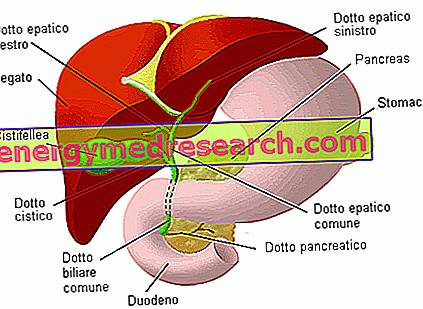What is cyanosis
The medical term cyanosis indicates a bluish-violet color of skin and mucous membranes, a typical consequence of an insufficient amount of oxygen in the blood.

- an excessive concentration of deoxygenated hemoglobin in the blood capillaries, due to a deficit of central oxygenation (with reduction of oxygenated Hb);
- a slowing down of the peripheral circulation (venous stasis), with a consequent increase in the extraction of oxygen from the Hb by the tissues;
- an increase in the concentration of hemoglobin derivatives (such as methaemoglobin or sulfoemoglobin) in the capillary bed.
Cyanosis is associated with a variety of conditions, many of which are life-threatening: hypoxia, extreme cooling, airway obstruction caused by a foreign object (suffocation), heart failure, difficulty in respiratory function and cardiopulmonary arrest. In newborns, it may be evident as a result of congenital heart defects or respiratory distress syndrome.
Hemoglobin, dermal blood supply and skin color
The color of the skin is determined - in addition to the composition and concentration of two pigments (carotene and melanin) - also from the dermal blood supply. Red blood cells contain hemoglobin (Hb), which binds oxygen to transport it into the body. Oxygenated Hb takes on a bright red color, which gives the blood vessels present in the dermis a pinkish color, more evident in light-skinned subjects. During an inflammatory process, that is when these vessels are dilated, this color becomes more pronounced. Conversely, following a reduction in systemic vasculature, the superficial vessels lose oxygen and the reduced (or deoxygenated) hemoglobin changes color, becoming darker. The skin surface and mucous membranes consequently take on a bluish color and are referred to as cyanosis.
Symptoms
Cyanosis is evident in tissues near the surface of the skin due to low oxygen saturation. In particular, it is easily found at the level of the lips, nail bed, ear lobes, cheekbones, mucous membranes and other locations where the skin is particularly thin. Cyanosis may or may not be associated with other symptoms that vary depending on the underlying condition.
Cardiac and respiratory symptoms associated with cyanosis:
- Chest pain;
- Breathing difficulties, including rapid breathing (tachypnea) and shortness of breath (dyspnea);
- Cough with dark mucus.
Other symptoms that can occur with cyanosis:
- Temperature;
- Lethargy;
- Headache;
- Changes in mental status, including confusion and loss of consciousness, even for a brief moment.
Physiopathological mechanisms
From the physio-pathogenetic point of view, three mechanisms cause cyanosis:
- Systemic oxygen desaturation : a pulmonary problem (asthma, COPD, lung cancer ...) or cardiac (heart disease of various kinds) can lead to an insufficient concentration of oxygenated hemoglobin in arterial blood (there is little oxygen, so a lot of Hb reduced / deoxygenated).
- A slowing of the peripheral circulation, due to circulatory problems (eg varicose veins, atrial fibrillation, right heart failure), can induce increased extraction of oxygen by peripheral tissues.
- A generalized cyanosis can manifest itself when - as during particular poisonings (ingestion of drugs / toxins or metals, such as silver or lead, carbon monoxide poisoning) - abnormal hemoglobin compounds are formed, such as methaemoglobin or sulfoemoglobin.
Based on these causal mechanisms, two main types of cyanosis are described:
- central cyanosis (affects the whole body)
- peripheral cyanosis (affects only the extremities or the fingers).
Cyanosis can be limited to only one district of the body, for example to the limbs, and in this case it is related to local disorders of blood circulation.
Some dermatological conditions can cause a discoloration of the skin that mimics cyanosis, even in the presence of adequate levels of oxygen in the capillary beds.
Cyanosis can also be caused by external factors, such as high altitude (because there is "less oxygen" in the air) or exposure to air or cold water (which induce vasoconstriction).
Central cyanosis
Central cyanosis is often due to a circulatory or pulmonary problem, which leads to poor blood oxygenation. It develops when the concentration of deoxygenated hemoglobin (reduced Hb = not oxygenated) is equal to or greater than 5 g / 100 ml.
In adults with normal hemoglobin values (13.5-17 g / dL in men, 12-16 g / dL in women), central cyanosis is evident if oxygen saturation is ≤ 85% (coincides with insufficient saturation of O2 in the blood).
Normally, the concentration of deoxyhemoglobin in venous blood is about 3 g / 100 ml; this value varies depending on the increases or decreases of the total Hb values. Therefore, the critical concentration that causes cyanosis is reached more easily during poliglobulia, that is in subjects with a high concentration of hemoglobin (absolute) in the blood, and with greater difficulty from patients with anemia (in these subjects the saturation should fall to about 60%, before cyanosis becomes evident). As a result, oxygen deficiency may be more severe in an anemic patient who does not show cyanosis than a cyanotic patient with high hemoglobin values in the blood.
Possible causes of central cyanosis include:
1. Central Nervous System (alteration of normal ventilation):
- Intracranial hemorrhage;
- Abuse of certain drugs or drug overdoses (for example: heroin);
- Tonic-clonic crisis (for example: epileptic attack).
2. Respiratory system:
- Pneumonia;
- Bronchiolitis;
- Bronchospasm (for example: asthma);
- Pulmonary hypertension;
- Pulmonary embolism;
- Pleural effusion;
- Pulmonary fibrosis;
- hypoventilation;
- Chronic obstructive pulmonary disease (emphysema and chronic bronchitis);
- Upper airway obstruction.
3. Cardiovascular system:
- Congenital heart disease (eg tetralogy of Fallot, cardiopathies with left-right shunt, septal defects, etc.);
- Heart failure;
- valvular heart disease;
- Heart attack;
- Severe hypotension (shock);
- Chronic pericarditis.
4. Other causes:
- Severe methaemoglobinaemia (overproduction of abnormal hemoglobin);
- Polycythemia;
- Obstructive sleep apnea;
- Decrease of the partial pressure of oxygen in the atmosphere: at high altitude, cyanosis can develop at altitudes> 2, 400 m;
- Hypothermia (prolonged exposure to cold);
- Raynaud's phenomenon (due to severe limitation of blood flow to the fingers or toes);
- Acrocyanosis (persistent, painless and symmetrical cyanosis of hands, feet or face, caused by vasospasm of the small vessels of the skin, in response to cold).
Peripheral cyanosis
In this case, cyanotic patients have a normal saturation of systemic arterial oxygen, but their peripheral circulation is slowed (blood stasis in the tissues). Cyanosis can result from an arterio-venous oxygenation difference, which can lead to an increase in the extraction of oxygen by peripheral tissues.
All the factors that contribute to central cyanosis can cause the appearance of peripheral symptoms; however, peripheral cyanosis may also occur in the absence of cardiac or pulmonary dysfunction.
The causes of peripheral cyanosis include:
- All the most common causes of central cyanosis;
- Venous hypertension;
- Reduced cardiac output (for example: heart failure, hypovolemia, etc.);
- Arterial obstruction (for example: peripheral vascular disease);
- Venous obstruction (for example: deep vein thrombosis, thrombophlebitis, etc.);
- Generalized vasoconstriction due to exposure to cold (Raynaud's phenomenon).
Diagnosis
The evaluation of a cyanotic patient involves the following phases:
- Anamnesis: presence of congenital heart disease, medication or exposure to chemical agents (which result in abnormal hemoglobins).
- Medical examination to differentiate central cyanosis from the peripheral;
- If cyanosis is localized at one end, assess the presence of a peripheral vascular obstruction;
- Evaluation of the presence of Hippocratic fingers: sometimes, the combination of "drumstick" phalanges and cyanosis suggests the presence of congenital heart diseases and pulmonary diseases;
- Blood tests, including: complete blood count, spectroscopic and electrophoretic hemoglobin analysis (to measure abnormal Hb);
- Chest radiographs;
- Electrocardiogram (ECG) to measure the electrical activity of the heart;
- Pulmonary and lung function test.
Treatment
Cyanosis generally indicates that the body is unable to acquire enough oxygen. Treatment of the underlying disease (eg, heart disease or lung disease), or the underlying cause, can restore the appropriate color of the skin.
In some cases, acute cyanosis can be a symptom of a serious or life-threatening condition, which should be immediately assessed in an emergency context. In general, medical intervention should take place within 3-5 minutes.



